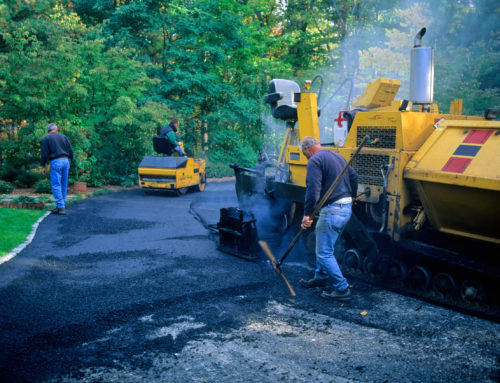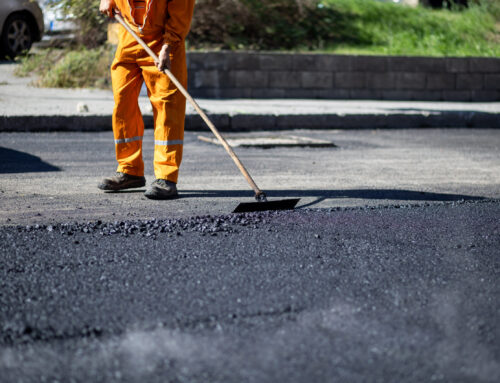As a responsible property owner, you understand the importance of maintaining your asphalt pavement. However, even with regular upkeep, cracks can still appear over time. Wear and tear is natural. Because of that it is crucial to distinguish between normal wear and tear and potentially serious issues that require immediate attention. In this blog post, we’ll explore the various types of cracks that can develop in asphalt pavement and discuss when you should be concerned.
Understanding Asphalt Cracks
Before delving into the different types of cracks, let’s first understand why they occur. Asphalt is a durable and flexible material, but it can still succumb to environmental factors and structural stress over time. Common causes of cracks include:
Aging
Asphalt undergoes natural wear and tear due to prolonged exposure to sunlight, heat, and oxidation. As it ages, it becomes more brittle and prone to cracking.
Water Damage
Water is one of the leading culprits behind pavement deterioration. When water seeps into the pavement through cracks or damaged areas, it weakens the underlying layers, causing cracks to form.
Freeze-thaw Cycles
In regions with colder climates, water can freeze within the pavement during winter. As it expands, it places pressure on the surrounding asphalt, leading to cracks.
Heavy Traffic
Constant vehicular traffic, especially from heavy vehicles, can exert significant stress on the pavement, causing it to crack over time.
Types of Cracks
Not all cracks are created equal, and understanding their characteristics can help you determine the severity of the issue. Here are some common types of cracks that you may encounter:
Hairline Cracks
These are thin, shallow cracks that typically measure less than a quarter-inch in width. Hairline cracks are usually superficial and more of an aesthetic concern than a structural issue. While they may not require immediate attention, they can eventually widen and allow water penetration, leading to further damage.
Alligator Cracks
These cracks resemble the scales of an alligator’s skin, hence the name. They often form a network of interconnected cracks and can be a sign of underlying structural problems. Alligator cracks may indicate issues with the pavement’s foundation, drainage, or the accumulation of heavy loads. If left unattended, they can lead to extensive damage and require costly repairs.
Transverse Cracks
These cracks run perpendicular to the pavement’s direction of travel. They are often caused by thermal contraction and expansion due to temperature fluctuations. While transverse cracks are common and usually not severe, they can allow water infiltration, leading to further deterioration if not addressed.
Longitudinal Cracks
Unlike transverse cracks, longitudinal cracks run parallel to the pavement’s direction of travel. They are typically caused by factors such as poor joint construction, asphalt shrinkage, or heavy traffic loads. Although longitudinal cracks may not pose an immediate threat, they can widen over time and necessitate repairs to prevent water damage and more extensive deterioration.
When to Worry
Now that we have discussed the various types of cracks, let’s explore when you should be concerned about your pavement’s condition:
Size and width: Cracks wider than a quarter-inch or those that continue to expand should raise a red flag. As cracks widen, they allow more water infiltration, compromising the structural integrity of the pavement. It’s essential to address these cracks promptly to prevent further damage.
Alligator cracking: The presence of extensive alligator cracks is a clear indication of serious underlying issues. These cracks can indicate structural problems that require immediate attention. Ignoring alligator cracking can lead to potholes, severe pavement deterioration, and safety hazards.
Potholes: When cracks are left unattended, they can evolve into potholes, which pose a significant risk to both pedestrians and vehicles. Potholes can also be an indication of subbase or drainage issues. It’s crucial to repair potholes promptly to ensure the safety of users and prevent further damage.
Increased water infiltration: If you notice water pooling or infiltrating through cracks in your pavement, it’s a sign that the cracks have widened or deepened enough to allow water penetration. This can result in further damage, including erosion of the subbase, weakening the pavement’s foundation. Addressing these cracks and resolving drainage issues promptly is vital to prevent costly repairs.
While it’s common for asphalt pavement to develop cracks over time, not all cracks warrant immediate concern. Understanding the different types of cracks and their severity is important in determining the appropriate course of action. Regular inspections and timely repairs can help maintain the integrity of your pavement and extend its lifespan.
Remember, early intervention is key to preventing minor cracks from turning into major headaches. If you’re unsure about the severity of cracks on your property, consult with an experienced asphalt paving contractor (*ahem* that’s us!) to assess the situation and recommend appropriate solutions.
Call Sunrise Asphalt today and we’ll take care of you! We’ve been helping Tucson for over 40 years!





